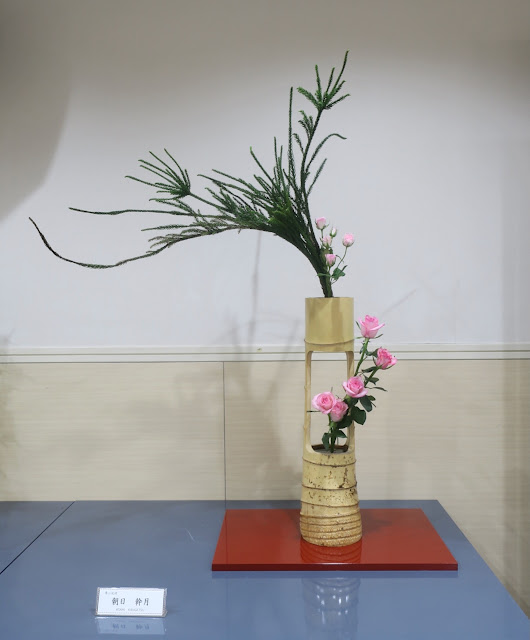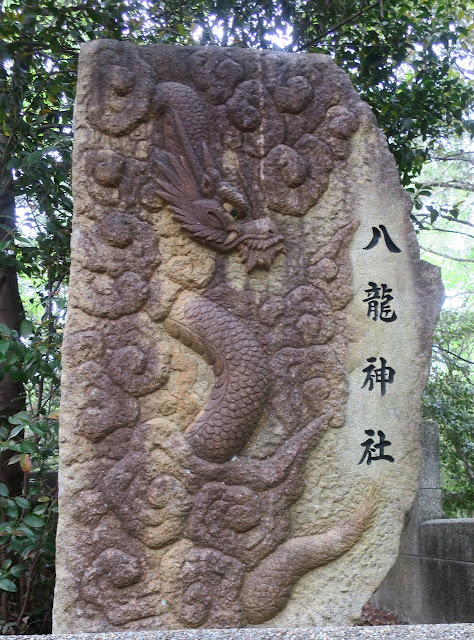This week Roadside Ikebana comes to you from Hokkaido, the most northern of the four largest islands of the Japanese archipelago.
Laurie and friends on their way to an almost abandoned village and railway station.
On another occasion we walked to a crescent lake on the lower slopes of Mt Yōtei.
I was delighted to learn that there was an Ikebana International exhibition by members of the Sapporo Chapter which we attended last Sunday.
(L - R) Aileen Clarke, Yoko Uneta, Sapporo I.I. Chapter President and member of the Sogetsu School, and me.
Below is a selection of photos from the exhibition.
This ikebana was made by Ms Uneta in an unusual Bizen vessel.
My attention was really caught by these two boldly coloured glass vases and the harmonising with the plant material colours.
This double Seika in the traditional bamboo vessel was particularly beautiful because of the expertly shaped and arranged lines of the green branch material.
I also liked this Reed and Gloriosa lily ikebana arranged in a narrow vessel.
As you can see it was set edge on to allow increased depth.
This large group ikebana was made by members of the Sogetsu school and used three tall mirrors that made the botanical materials seem to be appearing from nowhere.
Finally, a collaborative ikebana Aileen and I made with a dried branch of low growing pine. We added some dense Cyprus for its freshness and a small bunch of white button Chrysanthemums to lift the darkness of the other materials. In the absence of a tall vessel, a glass vase was used to give height and lightness to the ikebana. The window beyond is a 'snow viewing window' that rises from floor level to about one metre so that the gaze is forced down to the ground. A stone garden lies beyond.
25th May 2025

































